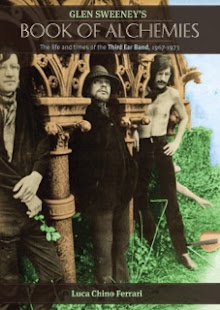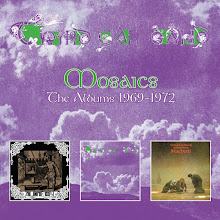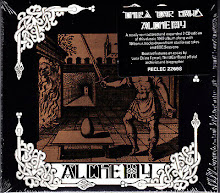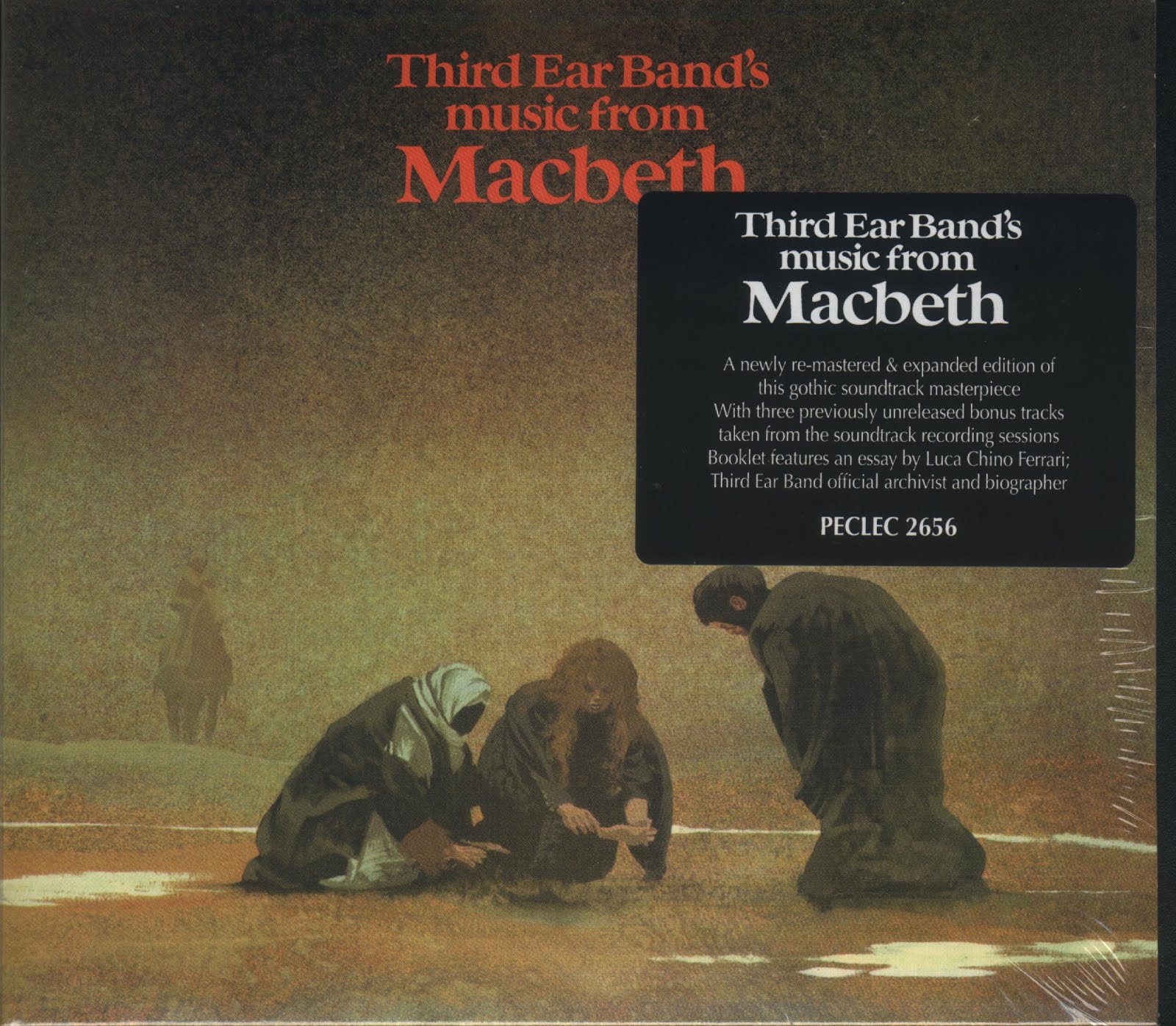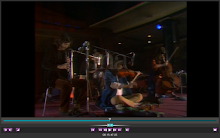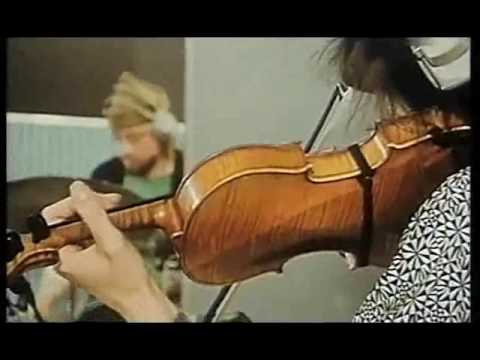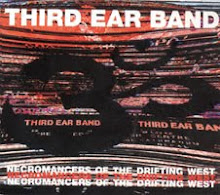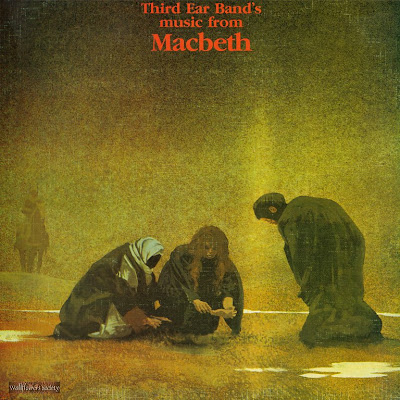We have here a very exclusive precious interview with DAVID LOXLEY, Chief Druid of the Ancient Order of Druids (London) and designer/writer involved with the London underground and the TEB in the '60's-'70's. Loxley assembled the "Alchemy" cover and designed lot of posters and flyers for gigs and festivals, drawing graphics for magazines as "Albion" directed by Steve Pank.
In this short interview he reveals the origins and meanings of the TEB's first album cover and the connection between the band and the Druids...
As every TEB fan knows you designed the beautiful “Alchemy” album cover. I’ve discovered the picture was taken from an old book about alchemy titled "Atalanta Fugiens", edited by German Michael Meier in 1617. Can you tell us the genesis of it, the reasons behind it, the real meanings?
"I didn’t really design the cover, it kind of happened with parts of it coming from different people. I put all the ingredients together. The main drawing is from a book written and illustrated in 1617. I think this originated from Glen or Steve Pank. I thought this was a bit too medieval.
One evening in my flat a girl from California drew a doodle of some snakes, and left them there as a gift. I redrew them and put them in the corners of the medieval image to make it look more celtic looking.
The image itself I have never interpreted for anyone before, but it has a very deep meaning, which could be the subject of a book and not just an answer, so here goes with an answer with a book hidden in it.
The picture has a courtyard with a tunnel entrance with a man in the middle about to crack an egg on a table. This is a totally symbolic image. On a material level the courtyard is a womb, if it was the Great Pyramid in Egypt it would be the chamber of transformation. The tunnel is the entrance to the womb, it has an egg in it waiting for a sperm to fertilise it.
 |
| The original 1617 engrave |
The image was meant to be interpreted on the mental level according to the upper room or womb. The brain is a courtyard with an egg in it called the Pineal gland. On an abstract level this gland has the same function as the egg in the physical womb. The tunnel is the Pituitary gland or the entrance for light to enter into the courtyard or brain and fertilise the Pineal gland. Both of these eggs, abstract and material are functionaries of the moon. The Great Pyramid at Giza has two entrances, one for the physical seeds to enter (mummies) and one for the light to enter, the physical body is the same.
 |
| Detail of the egg from the original cover |
The egg is the sleeping Beauty which will only wake up for the light. In the same way that the physical sperm has to give up everything or die into the egg in order to be resurrected into a new world as a baby, then the Pineal gland will only operate as an entrance to another world if the Pituitary gland which is ruled by Mercury gives up all of its light to the Pineal.
The Sword held by the man is not a weapon, but a symbol for something which cleaves the air. Light or electrons cut through space like a sword or a word and represent light and the present tense. The Moon will only give itself up to the Sunlight and than reflect it onto the land. To be enlightened the man must give up everything, judgements, what he thinks he knows and become nothing in order to be accepted by the egg, in return for this death he will be resurrected by the present tense which is the womb with an egg in it.
I think I have gone on long enough, so lets just finish by saying that the cover represents the real mysteries of Sex or creativity in the present tense".
Which meanings have the snakes around the border of the cover? In an old interview the same Glen Sweeney stated that they are there to protect the band and its music...
"The serpents at the corners of the cover had no real meaning intentionally. Originally they would have been used to protect the four corners of the world, north south east and west. The serpents lift the slightly flat image of the main picture and provide some contrast to project the cover a bit more".
Do you remember when/where/how did you meet Glen and the other guys of the band?
"I cannot guarantee my memory for some of these questions but I think I first saw Glen at a club called the UFO club in Tottenham Court Road in London in 1967 or thereabouts. At the time this was the place to be, but it was still quite a small scene with enormous potential for the future of social change. Glen was playing in a band whose name I cannot remember, It was a sort of free form spontaneous jazz group, I think [maybe the Hydrogen Jukebox?]".
What was you doing at the time? Which was your role in the London underground?
"At the time I was very young and did not see myself as having a particular role other than helping out where I could. I had just dropped out so to speak, a concept which would sound alien today. I was into having a good time. My flat was raided by the police but rather than arrest me for something they just said we will be back in 30 minutes and if I was you I would not be here, so me and my brother ended up 30 minutes later walking down the road to somewhere or nowhere. We asked in a bar if anyone knew of anywhere to stay, and we were sent to Steve Pank's flat, who kindly put us up for about a week. That is how I met Steve Pank who I have known for forty something years. At the time if it was happening anywhere it was in Portobello Road, Steve had a magazine called "Albion" which I did some drawings for and
 later on I helped him run a club in a church hall, for which I did the posters and handouts and any other menial tasks. This club never advertised who was playing because most of the people who came to jam did not tell their managers or record companies, even Steve did not know sometimes if anybody was coming to play or not. Some of the musicians and acts were very well known, and people just turned up to see whatever happened. The council eventually closed us down for making to much noise, or that was the reason given. One of the bands who played regulary was the Third Ear Band who Steve introduced me to them".
later on I helped him run a club in a church hall, for which I did the posters and handouts and any other menial tasks. This club never advertised who was playing because most of the people who came to jam did not tell their managers or record companies, even Steve did not know sometimes if anybody was coming to play or not. Some of the musicians and acts were very well known, and people just turned up to see whatever happened. The council eventually closed us down for making to much noise, or that was the reason given. One of the bands who played regulary was the Third Ear Band who Steve introduced me to them".
Can you tell me which was the real connections of TEB with the Druids?
"The real connection between TEB and druidism was or is, well I am not sure. I was interested in druidism so I joined a group, Steve Pank was also interested so he joined also. TEB music like a lot of freeform jazz at the time was about being in the present tense, opening up the door to another state of being. Some freeform jazz branched out into various kinds of indian or oriental music and created fusion music. Some of this music had spiritual connotations and meditation was also becoming popular. The TEB was a fusion between freeform jazz, indian music, meditation and folk music played on classical instruments. It was probably the first band of its kind but it was still about getting into the present tense or another state of being. The Druid Order is about the same thing in another context, linking up with another state of being or going beyond time and space searching for reality. So I guess although some of the connections are physical the real connection is abstract".
What do you think about TEB experience? Some people asks me if TEB music was devoted to the black magic... What can you tell about it?
"My previous answer answers most of this question as well. TEB has nothing to do with black magic. If black magic is superstition then no they were not. Black magic is just going against the light, every habit and resentment which we are stuck in is black magic, every desire to get revenge or hurt those whom we thought or did hurt us is black magic, war is black magic if it is based on an illusion and personal pride. Primitive people need a devil to blame otherwise they would have to take responsibility for their own actions. The devil is needed by immature people. If the devil existed he or she would be your best friend, supporting you to be in the past tense and stuck with the fantasy that you can have it all now and take it with you. It is if we are large enough a great honour to take the blame for the negative thoughts of others who cannot face the reality of their own failure to support the light. I think I will stop there as i am starting to sound like a born again preacher!"
What are you doing now? I know you’re still a Chief Druid…
"At the moment, I am still a Chief Druid which takes up some time, I have semi retired, I still do some design work, some writing, some physical work, making things etc. It is my second dropping out and I am looking at ways to earn some money without having to work all the time. So that ends my answers on a very practical note".
Loxley at the Spring equinox Druid ceremony on London Tower Hill in 2010. Note Carolyn Looker at the core of the picture (photo: Steve Pank).
REFERENCES TO DAVID LOXLEY IN THIS ARCHIVE
about the "Alchemy" cover
WRITINGS BY DAVID LOXLEY IN THE NET
about the Ancient Order of Druids
http://www.stonehengecampaign.org.uk/scdruids.htm#aod
Loxley wrote also an introduction for a Graham Howe's book titled "The Mind of the Druid" (Skoob Esoterica, UK 1990).
no©2012 Luca Ferrari (unless you intend to make a profit. In which case, ask first)













